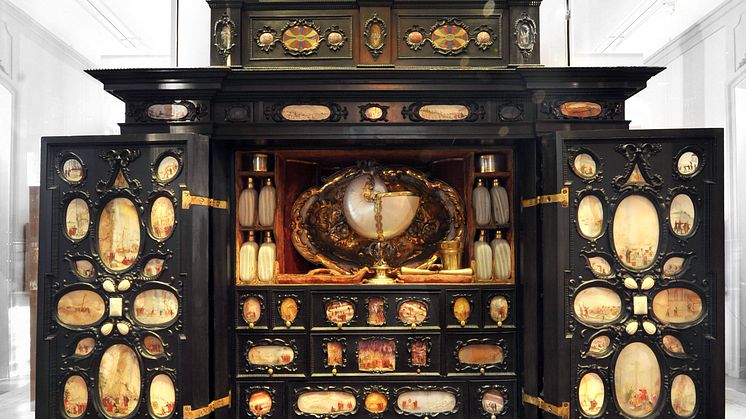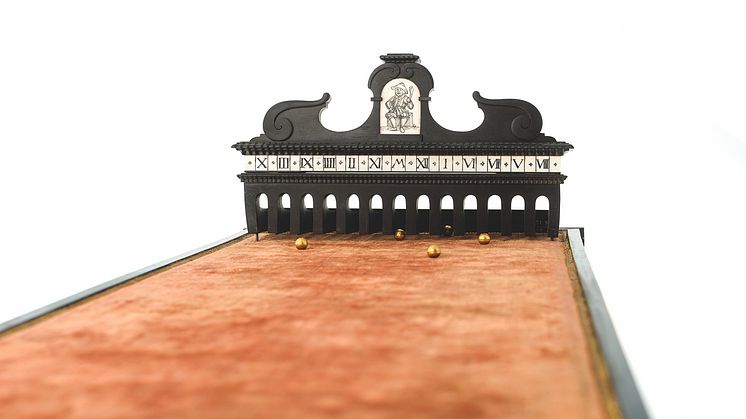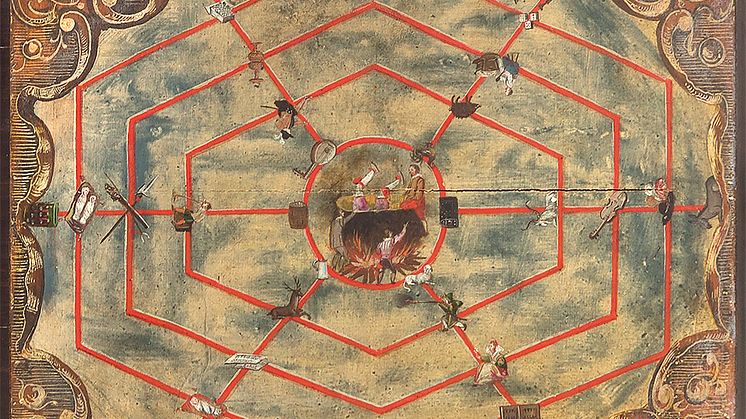
Press release -
Parlour games 400 years ago – almost like today
In a new thesis from Uppsala University, art historian Greger Sundin studied 16th and 17th century games that have been preserved in princely collections for example. Right at the end of his work on the thesis, he and a colleague were able to solve an over 300 year old riddle about a game in the Augsburg Art Cabinet.
In these times of self-isolation, as people spend a lot of time indoors with only a few others, many Monopoly games and Ludo sets have probably seen the light after many years lying forgotten in a drawer. There is nothing modern about playing board games and parlour games for entertainment and to pass the time. Many of the games we play today go back to at least the latter part of the 16th century. Chess is an example of a game that has been around for a very long time. The same is true of draughts and backgammon. Various forms of the Game of the Goose, in which players move their pieces along a track according to the total number shown on dice, also have a long history.
Everyone played these games, in every social class. Often the same types of game too, although chess was fairly expensive given all the pieces that needed to be carved. Card games, on the other hand, were easy to come by after the introduction of the printing press, and their use exploded in the 16th century (at the expense of games of dice).
“Studying games is a way of really getting close to the people who came before us. The frustration of unco-operative dice would have been as strong in 1620 as in 2020,” says Dr Greger Sundin, curator at Gustavianum, Uppsala University Museum.
The collections of the University Museum include the Augsburg Art Cabinet, which was finished in 1631. It is the best preserved, most famous art cabinet commissioned by the Augsburg merchant and art dealer Philipp Hainhofer (1578–1647). He filled his art cabinets with objects from around the world – everything from shells, minerals and animal parts to scientific instruments, relics and art objects. And games.
The Augsburg Art Cabinet was a gift to King Gustavus Adolphus from the City of Augsburg in 1632 and it contains a large number of games and pastimes. In his thesis, Greger Sundin used these games as a springboard for exploring what various board and card games looked like and how they were used in princely collecting in the early 17th century. Were they used as games in the same way as today? Were games in art cabinets intended to be used or were they intended to represent games instead, in a context in which so much was just for show?
After having closely studied the games preserved from Hainhofer’s cabinets around Europe, Greger Sundin drew the conclusion that the games were not only viewed. They were also used, presumably by the owners of the cabinets and their guests. He also noted that all the games were very accessible in the cabinets so that they could easily be taken out and played.
After having studied hundreds of games, Greger Sundin was able to reconstruct both how they were used and how contemporary attitudes affected their design, materials and rules. He was also able to deduce from the games included in the art cabinets that Hainhofer not only listened to his clients but also chose them based on his own great interest in games.
In the very last weeks before the thesis was to go to print, Greger Sundin and a colleague in Germany were able to solve a riddle about a mysterious game in the Augsburg Art Cabinet, the name and rules of which had already been forgotten when it was first described in Sweden in 1694.
They established that the imaginatively decorated game was ‘Unfaithful neighbours’ or perhaps ‘Go to Hell’ (Höllfahren in German). The board was used for moving pieces while the players played cards. Depending on where you landed, different rules applied. For example, you had to be quiet or address someone in a specific way. If you failed to follow the rules, you moved a step closer to the centre, where people were being cooked in a pot. If you ended up there, you lost. The last player left was the winner and took all the money. Hainhofer, the creator of the art cabinets, used to play this type of game on his travels.
For more information, please contact Greger Sundin, tel.: +46 (0)72-9999746, e-mail: greger.sundin@gustavianum.uu.se
A Matter of Amusement: The Material Culture of Philipp Hainhofer’s Games in Early Modern Princely Collections, Acta Universitatis Upsaliensis, 2020.
Topics
Uppsala University
The first University in Sweden. Quality, knowledge, and creativity since 1477. Education and research of the highest quality and relevance to society, business, and culture. Uppsala University is ranked among the world’s top higher education institutions. www.uu.se





